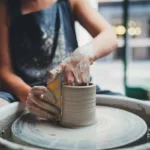According to Statista, mid-tier influencers (50k – 500k followers) are charging an average of $1,221 per Instagram post. “Influencing” has become a lucrative job, with some celebrities rumored to charge close to $1 million per endorsement post.
The influencing craze has led to exhaustion among consumers and content creators alike, who feel the pressure to feed into the marketing machine driving engagement on social media. Hence, a new trend is emerging: de-influencing.
What is De-Influencing?
De-influencing has been hailed as the opposite of influencing. De-influencing takes place when an influencer tells their followers not to buy or use a product.
This trend started with the beauty and lifestyle categories but has since moved to other areas and popular products. Influencers discuss products they think are overhyped and often provide alternatives to their followers.
Why is De-Influencing Popular?
Like everything on the internet, there are a variety of (often competing) motivations driving the de-influencing movement. Some consumers are becoming more conscious of the environmental impact of overconsumption. Others are feeling the pinch of inflation and trying to spend less on products that aren’t necessary.
Many users are also becoming more skeptical of influencers who promote products that they don’t actually use or believe in. De-influencing has roots in the beauty content game. Influencers like Mikayla Nogueira, Meredith Duxbury, and Alix Earle post videos of themselves getting ready and recommending specific products — with mixed results.
“When you buy a product because influencers recommended it, you expect it to work. However, judging by the countless new TikTok videos, many of these influencer-touted beauty products don’t live up to the hype,” wrote Refinery29. “When they don’t live up to their promises, you rightfully feel cheated of your hard-earned money — and that’s exactly why cosmetics fans are increasingly demanding honesty from the influencers they follow.”
Some beauty de-influencers are starting to catch on and posting cheaper alternatives that they stand by, even claiming to return products they believe aren’t worth recommending. The creator behind @valeriafride says that she’s not going to keep a viral product if she doesn’t like it.
Is De-Influencing here to stay?
Some argue that influencers may de-influence products simply to get attention or to make money. As Stephanie McNeal, a reporter at Buzzfeed, points out, de-influencing is just…another form of influencing. The best influencers have always been honest and authentic about the products they recommend and clear about the ones they don’t.
“Deinfluencing is a fun trend and TikTok buzzword, but the media’s embrace of the term illustrates some misconceptions about influencers. It doesn’t spell the end of the industry at all — it’s just another version of the same thing,” she wrote.
Influencers who share their genuine thoughts, both positive and negative, are those who have the most staying power. And, for consumers, it ultimately doesn’t matter what you call it. Today’s followers are critical of any de-influencing content they see and are able to make their own decisions about whether or not to buy a product. It’s up to influencers and de-influencers alike to meet those expectations.



